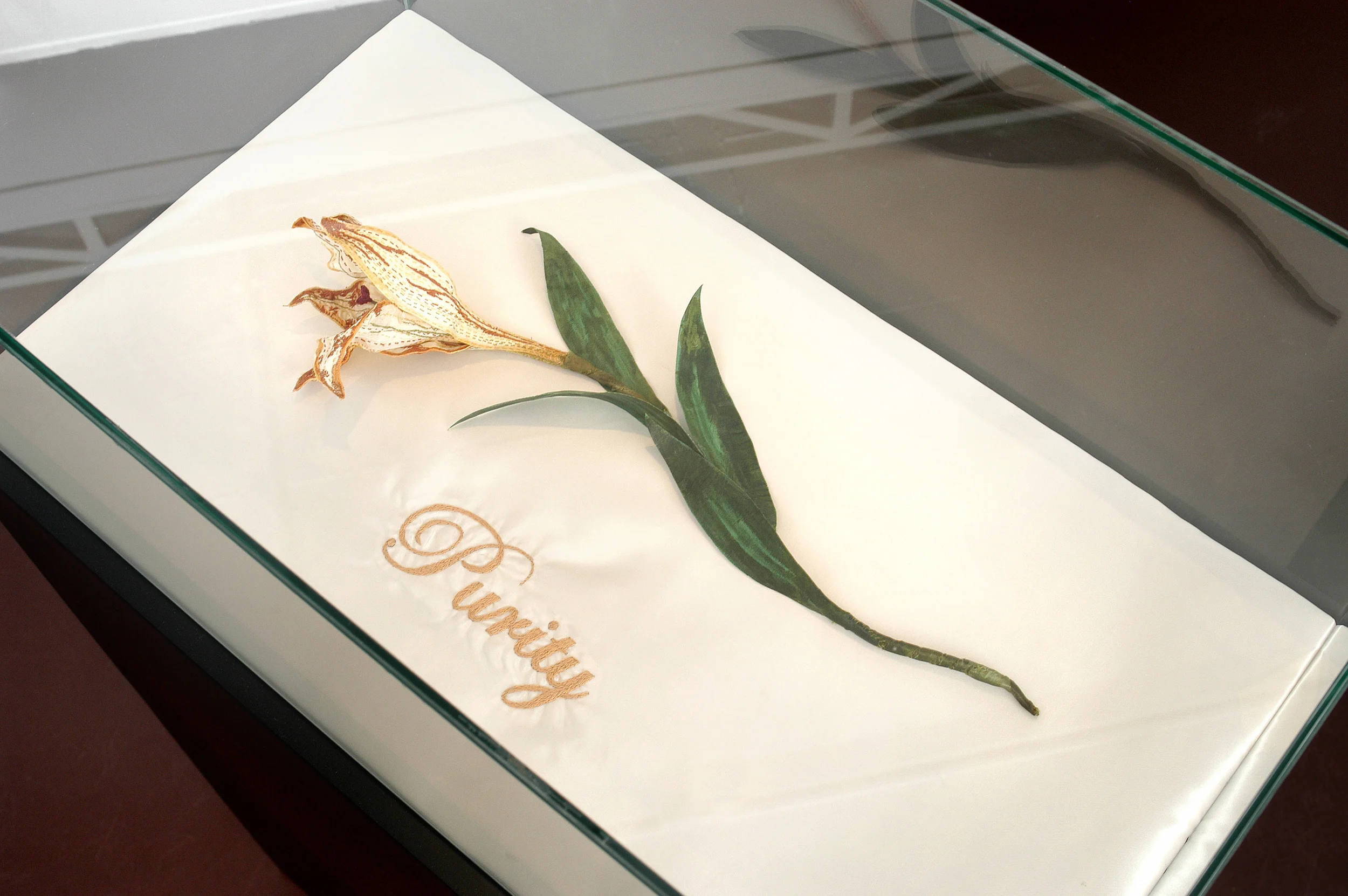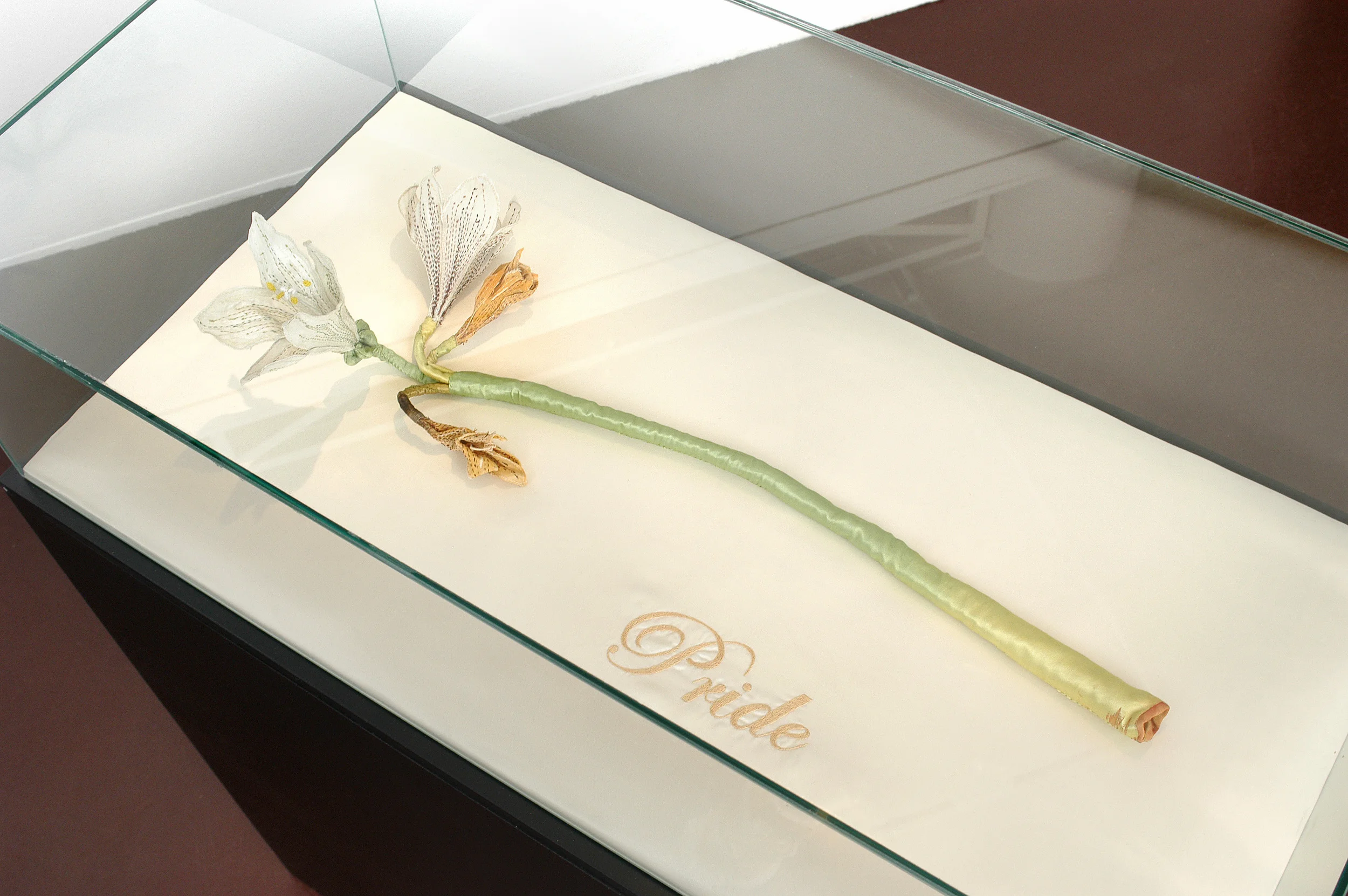Love Smells Like Death
2004, Silk, embroidery, wire, embroidered satin cushion, glass box and wooden plinth, Life size
The starting point for the series of work is a text written by George Bataille on flowers, coupled with the provoking image of Miss Havisham in Charles Dickens’s novel “Great Expectations”.
Bataille writes:
“… The flower is betrayed by the fragility of its corolla: thus, far from answering the demands of human ideas, it is the sign of their failure. In fact after a very short period of glory the marvelous corolla rots indecently in the sun, thus becoming, for the plant, a garish withering. Risen from the stench of the manure pile – even though it seemed for a moment to have escaped it in a flight of angelic and lyrical purity – the flower seems to relapse abruptly into its original squalor…flowers wither like old and overly made-up dowagers, and they die ridiculously on stems that seem to carry them to the clouds…
It seems, in fact, that desire has nothing to do with ideal beauty, or more precisely, that it only arises in order to stain and with the beauty that for many sad and well-ordered personalities is only a limit, a categorical imperative.”
And Dickens introduces Miss Havisham as follows:
“…I knocked, and was told from within to enter…
She was dressed in rich materials – satins, lace, and silks – all of white. Her shoes were white. And she had a long white veil dependent from her hair, and she had bridal flowers in her hair, but her hair was white… she had not finished dressing, for she had but one shoe on – the other was on the table near her hand – her veil was but half arranged, her watch and chain were not put on, and some lace from her bosom lay with those trinkets…all confusedly heaped about the looking-glass.
It was not in the first moments that I saw all these things, though I saw more of them in the first moments than might be supposed. But, I saw that everything within my view, which ought to be white, had been white long ago, and had lost its luster, and was faded and yellow. I saw that the bride within the bridal dress had withered like the dress, and like the flowers, and had no brightness left but the brightness of her sunken eyes. I saw that the dress had been put on the rounded figure of a young woman, and that the figure on which it now hung loose, had shrunk to skin and bone…”
Both reference the decay of flowers, the withering of an ideal.
Flowers are often used to symbolize love and ideal beauty. They are used extravagantly at weddings and funerals alike and always appear to represent some kind of considerate or emotive gesture. But the moment being investigated is the death of the flower, or rather the moment when the beauty fades, and the decay begins.
The flowers are made of silk and other opulent materials and are realistic, delicate and detailed. On second glance, however, the greens are faded and the whites yellowed. The flowers have begun to droop and the petals to fall. The natural progression of things is thus suspended forever, not at the flower’s glorious peak, but rather at its disappointing decline. They hover eternally between life and death, immortalized as a moment passed. They represent the refusal to let go of or abandon an ideal even when things will never be the same again, when all is really lost.
Each flower is placed delicately on a cream silk cushion and is cased in glass. The flowers are named after the emotions or ideals they represent - orchids=beauty, lilies=purity etc.

Beauty

Heartlessness

Innocence

Insincerity

Purity

Passion

Mistakes
